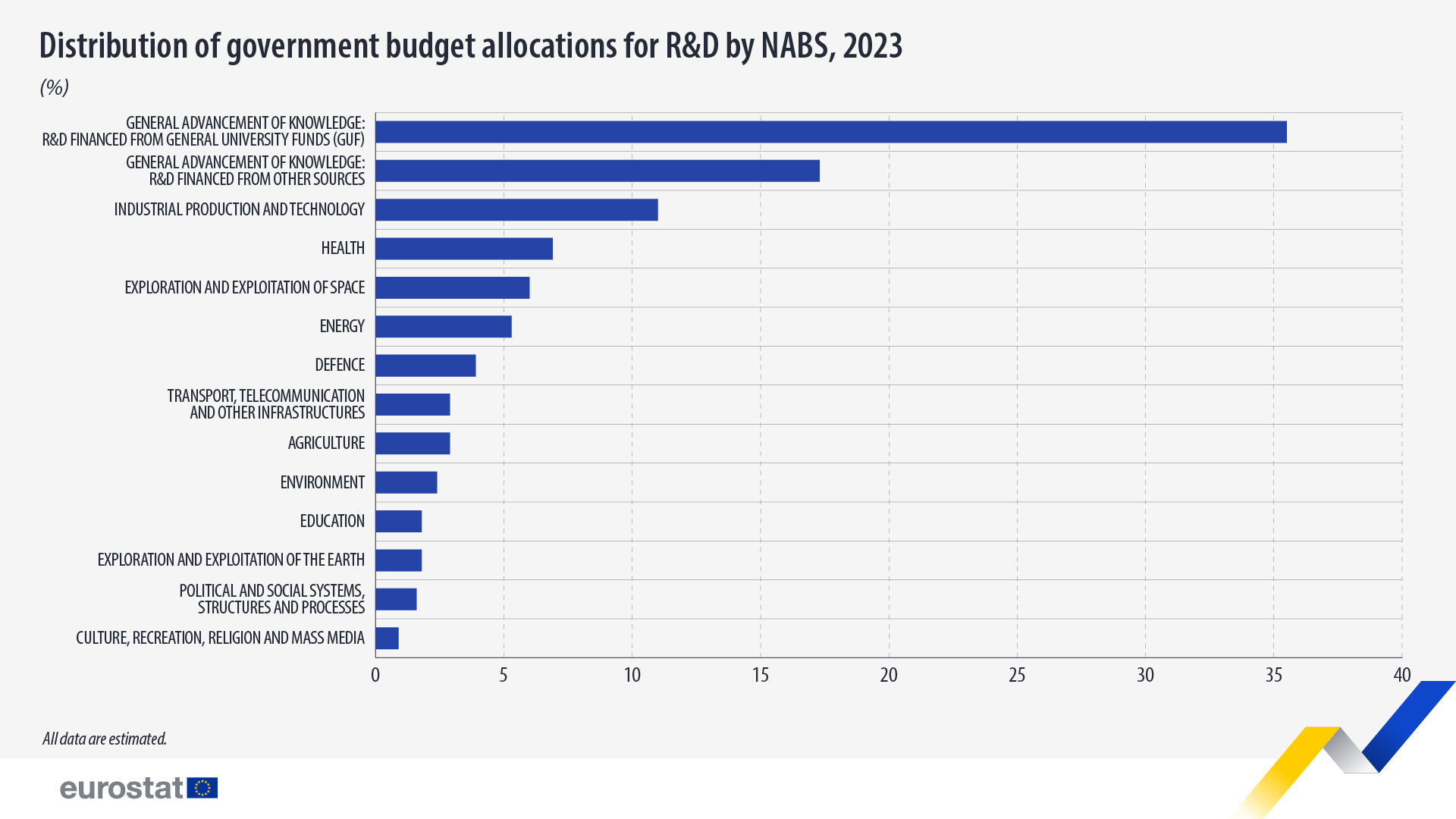In 2023, the total government budget allocations for R&D (GBARD) across the EU stood at €123 684 million, equivalent to 0.73% of GDP. This was a 5.3% increase compared with 2022 (€117 424 million) and a 54.8% increase compared with 2013 (€79 886 million).
This information comes from data on government budget allocations for R&D (GBARD) published by Eurostat today. The article presents a handful of findings from the more detailed Statistics Explained article.
In 2023, government budget allocations for R&D at the EU level stood at €275.6 per person, a 53.3% increase compared with 2013 (€181.0 per person).
The highest allocations were recorded in Luxembourg (€646.6 per person), followed at a distance by Denmark (€552.4) and Germany (€529.3).
On the other hand, EU countries with the lowest R&D budget allocations per person were Romania (€21.2 per person), Bulgaria (€33.1) and Hungary (€48.1).
Source dataset: gba_nabsfin07
Between 2013 and 2023, almost all EU governments increased their budget allocations for R&D in terms of € per person. The largest percentage increases were recorded in Latvia (+291% from €16.0 per person in 2013 to €62.6 in 2023), Poland (+147% from €37.8 to €93.3) and Bulgaria (+133% from €14.2 to €33.1). Hungary was the only EU country to register a decrease (-28% from €66.9 to €48.1).
More than a third of R&D budget goes to general university funds
The biggest share of the 2023 government budget allocations for R&D, namely 35.5%, was directed to the general advancement of knowledge, primarily financed by a public block grant known as public general university funds (GUF), which many public higher education institutions receive to support all their activities. Additionally, 17.3% of the GBARD was dedicated to the general advancement of knowledge from other sources than GUF, followed by 11.0% for industrial production and technology, 6.9% for health and 6.0% for exploration and exploitation of space.

Source dataset: gba_nabsfin07




